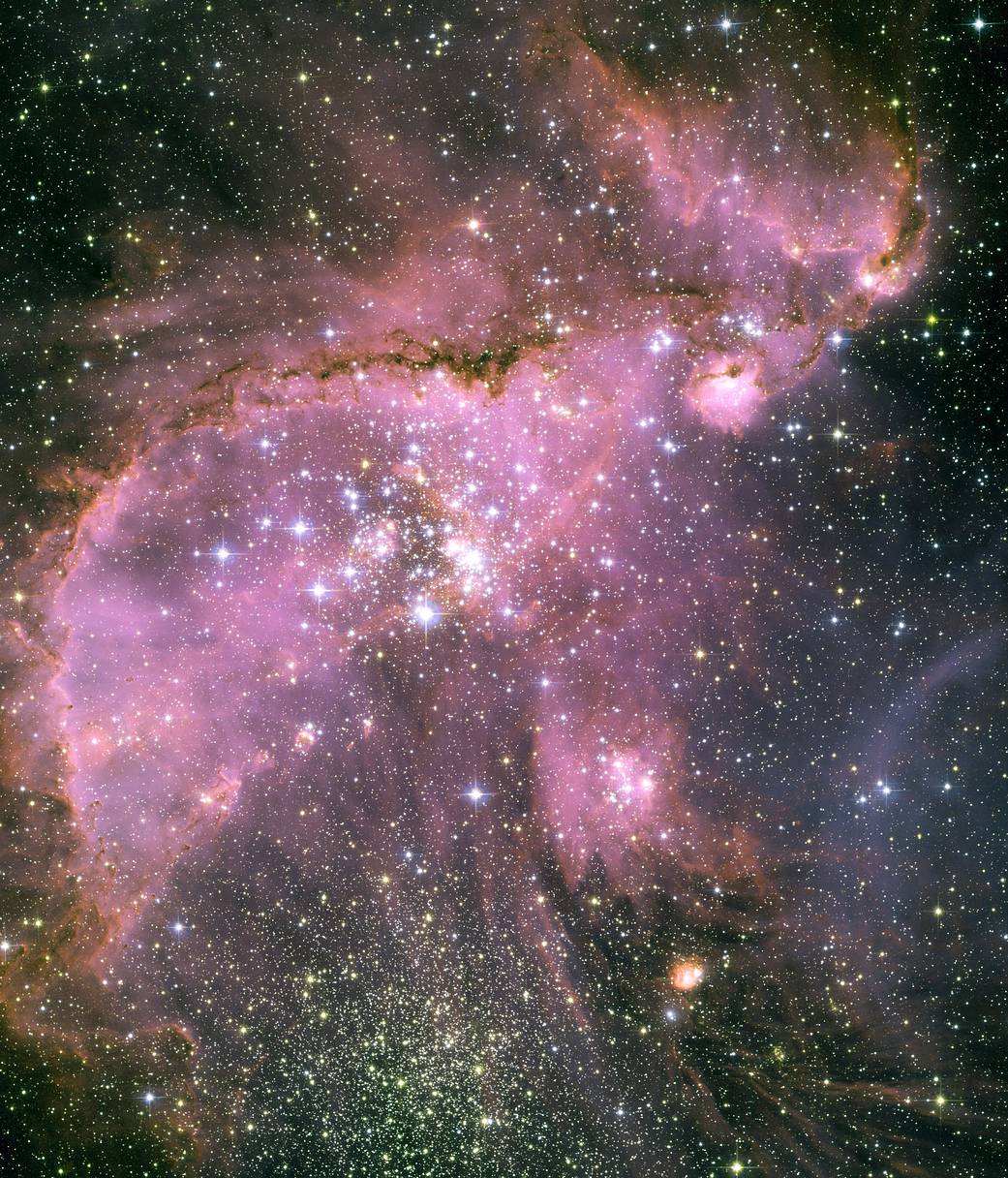Why you already live in a cybernetic universe
What you're really seeing when you look at space pictures
Look at this and tell me it's not pretty:

That's the Small Magellanic Cloud (SMC), a small satellite galaxy about 210,000 light years from Earth.
All those gorgeous pictures that NASA shows off might give you the idea that space really looks like that.
What's "really"?
Thorny question.
The photos aren't making up anything. It's not like Hubble is generating computer artwork. There's real stuff out there imaged by the telescopes.
But if you put a human in the same spot in space, they wouldn't see that image.
Hubble images are put together from multiple sources. Only a few of them are in visible wavelengths of light – the kind of light that our eyes can detect.
There's also a matter of perspective. Artists never really understood perspective until the Renaissance in Europe. Before that, they painted flat pictures and drew flat drawings.
The location of the viewer in space is what gives an image depth, a feeling that you're occupying a place rather than looking at a two-dimensional image.
A gorgeous NASA photo couldn't be seen by a single person with a human perspective.
That picture at the top of this post covers hundreds of light years. Even if you were in the right part of the sky to look at that thing, you wouldn't see that image.
Lovely as they are, these pictures of the night sky give us an artist's vision of how the universe looks.
All those rainbow-hued nebula and jewel-studded, galaxy-ringed shots we've come to know and love don't strictly exist.
You could never see them with the unaided human eye.
They're a product of our instruments, the machines, the software, and the image editing techniques that scientists and engineers have built to view these heavenly objects.
And that forces you to ask a hard question.
If we can't see it without the aid of a machine, is it really out there?
This is an old problem in epistemology (the theory of knowledge and rationality).
Do humans observe a reality that already exists Out There?
Team "Yes" says that a human mind passively receives information from the environment through the senses and then creates an inner model of the outer world.
Team "Nope" argues that there's no way to study a system passively. Any information you could receive about the system depends on...
+ The internal structure of the observer (you can't see visible light unless you've got the eyes to see it with), or
+ Fiddling around with the system to get a response from it.
Any information you get from "reality" depends on how you are built and what you do to milk the world for its secrets.
One way or another, any objective knowledge of external reality supposes a subject who comes to know it.
There's no way to knowledge without a somebody taking action to get that knowledge.
Wild stuff.
In a way, all those NASA pics have helped to remake the universe as an artificial construct. We don't see the universe as it is. We see it as our computer-aided perspective shows it to us.
The universe as we know it is already (partly) created by machines.
That ought to send a little shiver up the old spine.
Like this article? You'll get to read all the member-only posts if you join us.
Want to leave a comment? You'll need to join us inside the the private rogue planet community.
Members can discuss this article over at the rogue planet zone on SocialLair.

